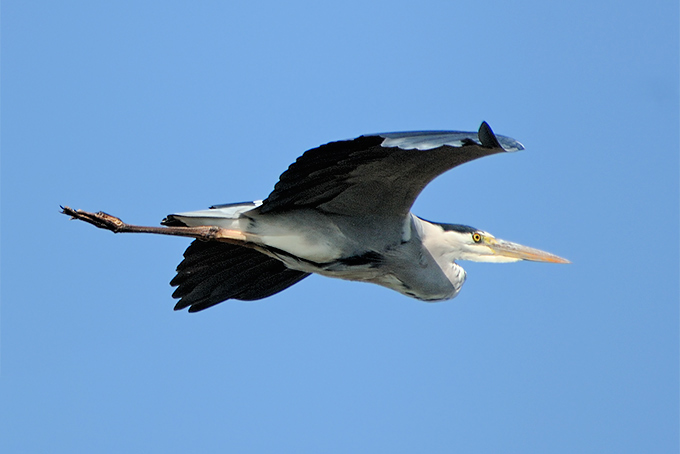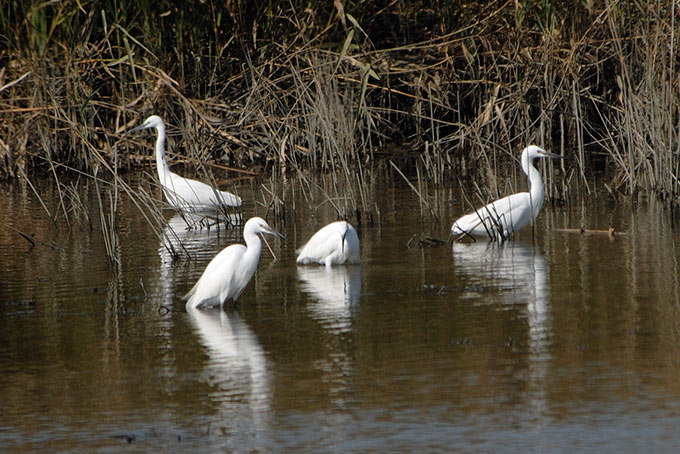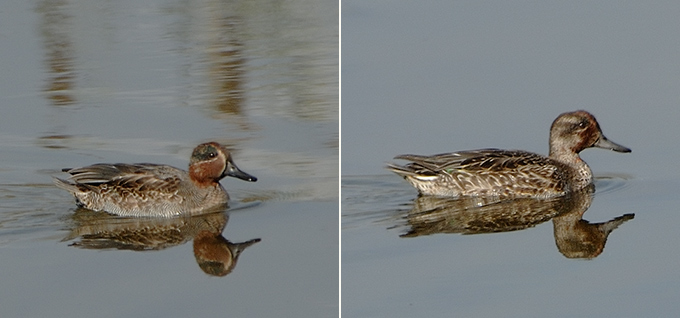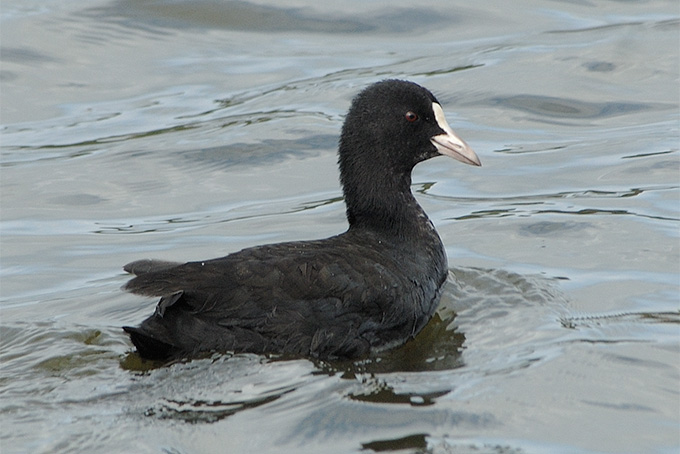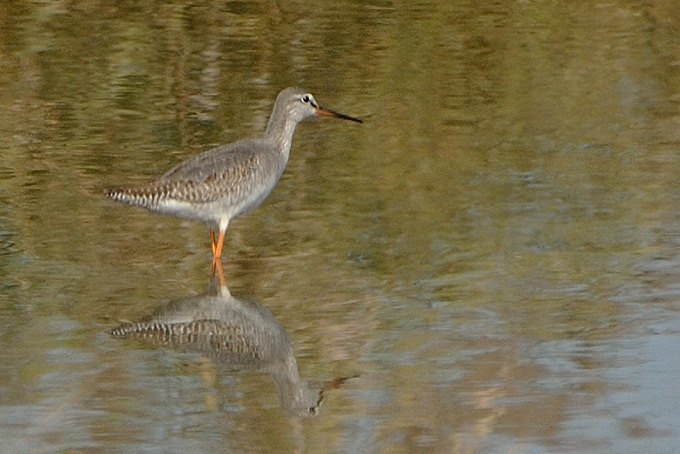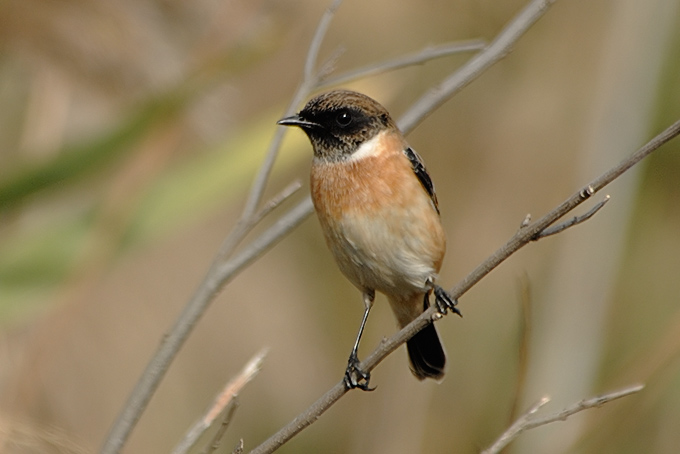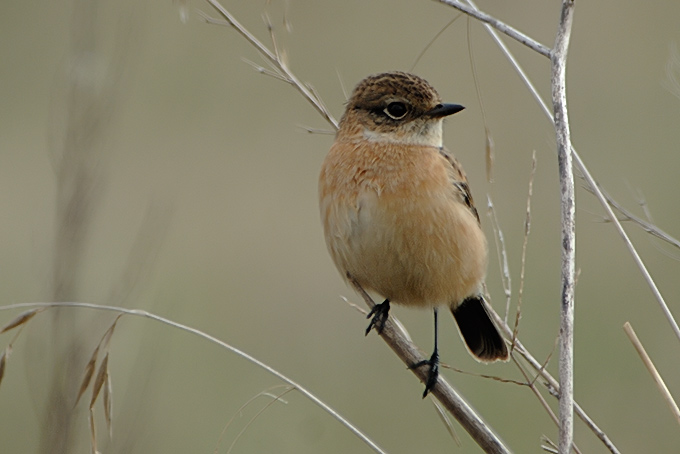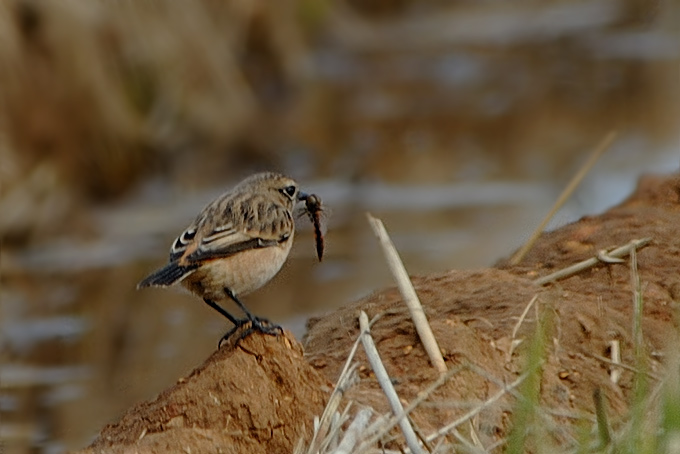 | E-mail to Birds Korea |
 | KWBS |
in the Region
 | The Oriental Bird Club |
 | BirdLife International (Asia) |
November
Waves of colder air cause a sharp drop in temperature, especially from mid-month onwards, when maxima can be as low as 8-10°C: the last of the autumn migrants are joined by huge numbers of wintering waterbirds.
Numbers of Baikal Teal continue to build, along with geese (many of which move on into China). Swan Geese peak at the Han-Imjin (with 1000-1500 in recent autumns). Common Buzzards and Cinereous Vultures start to arrive for the winter, along with gulls (Saunders’s, Heuglin’s, Vega, Mongolian and Slaty-backed are all widespread), Red-crowned, White-naped and Hooded Cranes, and passerines, including Siberian Accentor. Movements of pers and alcids, most especially Ancient Murrelet, can be impressive. Passerines include many late summer visitors until the second week of the month, when winter species, such as Chinese Penduline Tit and Pallas’s Reed Bunting start to predominate.
In recent years November has produced national rarities such as Red Phalarope, Iceland Gull and the country’s third and fourth Verditer Flycatchers in 2004. National firsts in November include White-capped Water Redstart in 2003 and Redwing in 2006.
(The following records are a compilation of our own sightings and records sent in by other observers. As well as being posted on the Birds Korea website(s), selected records are also forwarded to other Korean-language birding websites; records of threatened species are arranged and forwarded to Birdlife International and national authorities when appropriate; flag images and records are passed to bodies responsible for their coordination throughout the flyway; and all records sent to us are used to compile annual reports and to support the evolving understanding of the status of many of Korea’s birds.)
Junam Reservoir, November 26
Generally foggy conditions with poor visibility for most of my 2 hour visit. The most unexpected sighting was an adult male Long-tailed Shrike, which showed very well on bushes at the edge of the reservoir, seen from the viewing platform near the sluice gates. The fog occasionally cleared enough to observe birds further out on the reservoir, among which 28 White-naped Cranes and 2 Swan Geese were seen. 2 Common Snipe were also present. The resident wild cat (which I presume is an Amur Leopard Cat) also gave great views as it crossed a creek about 100 metres north of the observation tower, and subsequently caught a fish in the shallow water while being closely observed by the local Great and Little Egrets.
National Arboretum, November 26
A warm and slightly foggy afternoon at the Sumokgwan: very quiet birdwise, with even the usual tits (Varied, Long-tailed, Marsh and Great) in sparse numbers. Highlights were 4 overhead Cinereous Vultures, a Common Buzzard,what sounded like 2 or 3 Yellow-throated Buntings, 4 Eurasian Nuthatches, about 6 Hawfinches, and a Solitary Snipe.
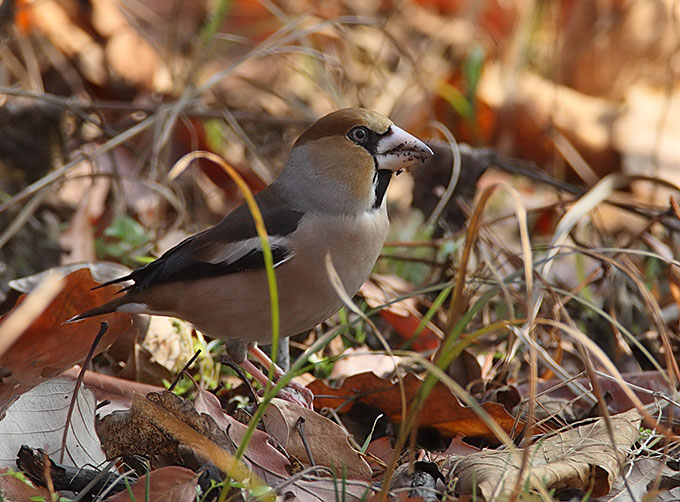
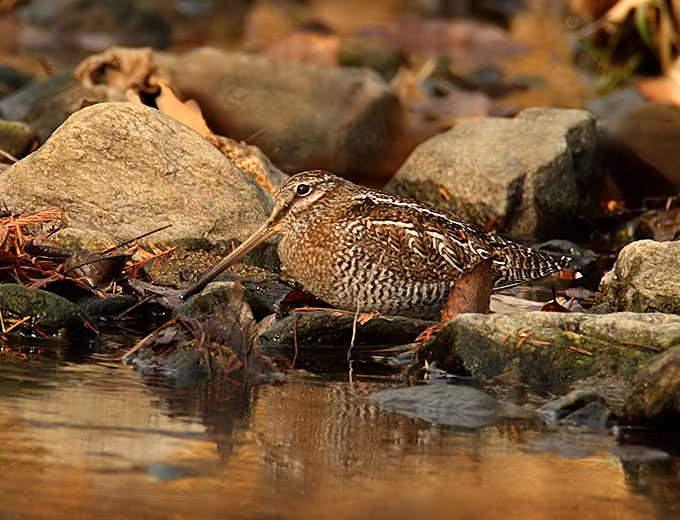
Shihwa, November 22
A return to Shihwa, this time in the morning. Eurasian Wigeon numbers seemed comparable to counts from the last two days; unfortunately, a main part of the flock was very distant. Falcated Duck (about 200) were accompanied by scattered Shovelers, Gadwall and Common Shelduck . 20 Ruddy Shelduck flew over. 30 Bean Geese flew over. Two groups of Whooper Swans totaled about 30, and 2 Tundra Swans splashed down near the Shelducks. Other highlights were a Chinese Grey Shrike, a pair of Hen Harriers, 2 Eurasian Spoonbills and 6 Pallas’s Reed Buntings.
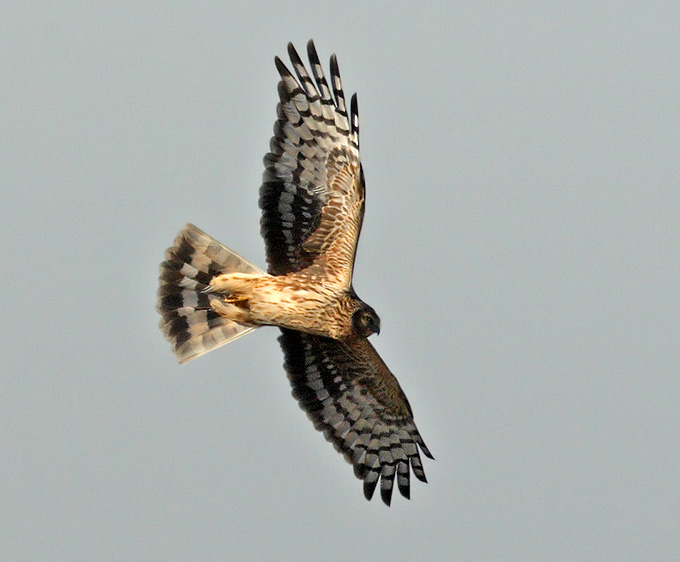
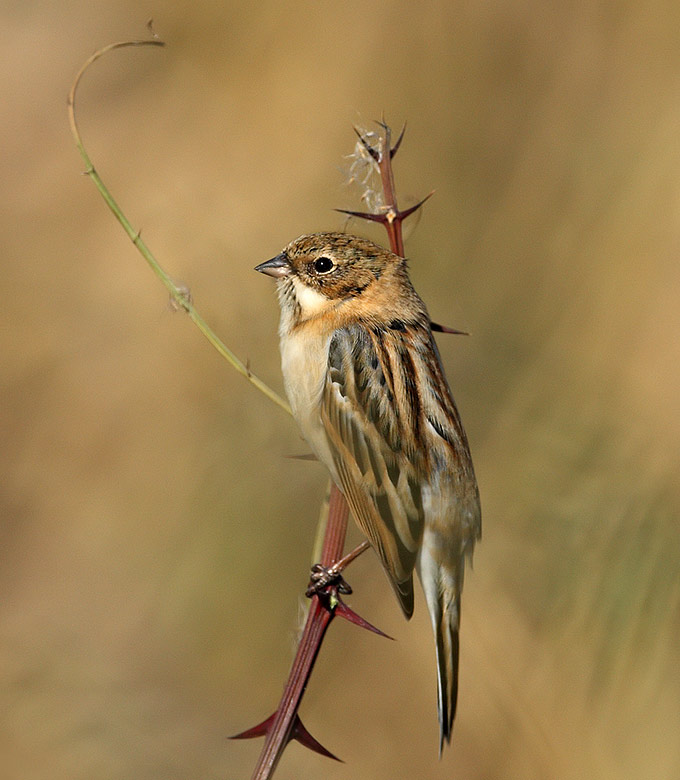
Uiwang, November 22
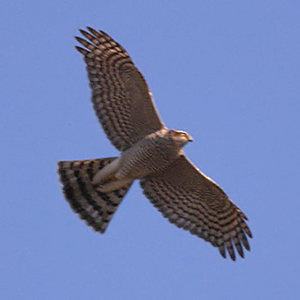
Photo © Joseph Bieksza
It turned out to be a crisp Sunday morning, despite the given dreary weather forecast. It will be interesting to see how the birds cope with the massive encroachment via exercisers walking around the lake (further aided by large reed removal efforts) and the multiple building fronts which start from the catwalk next to Uiwang stn. all the way to the rice fields that hug the lake. There were massive numbers of Spot-billed Duck mixed in with Eurasian Teal & Mallard all around the water edges. Near one of the center reedbed islands, there were about 150 Bean Goose. I also managed to see a lone Northern Goshawk and Peregrine Falcon (harassing the Spot-billed-Ducks and Mallards).
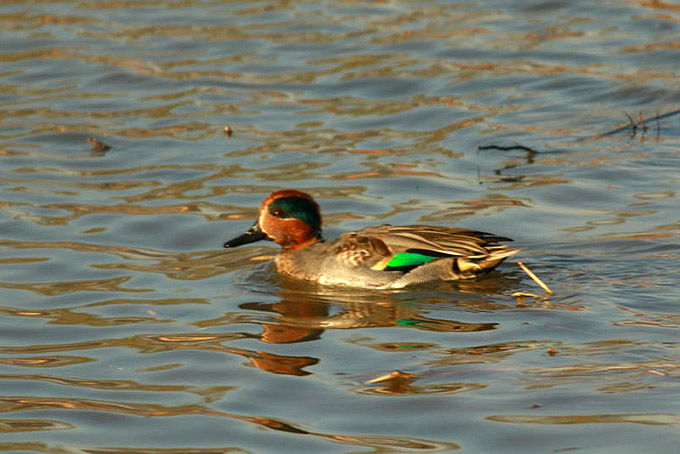
Shihwa, November 21
An enjoyable bright and crystal clear afternoon walk from the upper reaches of the lake to the seawall/barrage. This vast, relatively empty area of reclaimed former mudflat has grown into some outstanding shallow wetland habitat, which is however being rapidly developed and built on . A procession of trucks trundles along its new roads,motorboats ply back and forth, and the opposite bank (a productive shorebird roost until last year) has dissapeared under fresh construction. I attempted a count of the large numbers of wintering wildfowl: from the upper reaches to the wall were 3200 Common Pochard, 360 Goldeneye, 300+ Tufted Duck,c.1000 Eurasian Wigeon, 200+ Pintail,700 Falcated Duck, 600+ Gadwall, 15 Ruddy Shelduck, 600 Eastern Spot-billed Duck, 40+ Common Shelduck, 80 Greater Scaup, 130 Coot, 120 Great Crested Grebe,75 Black-necked Grebe, 42 Whooper Swan, c.60 Mallard, 25 Shoveler, 430 Tundra Bean Geese, 210 Common Merganser, 80 + Great Cormorant & 2 Smew. Raptors consisted of a male Hen Harrier (bombarded by a Kestrel) and 1 adult White-tailed Eagle. Best for the day however was finding a very distant but striking male Long-tailed Duck far out in the deeper water.
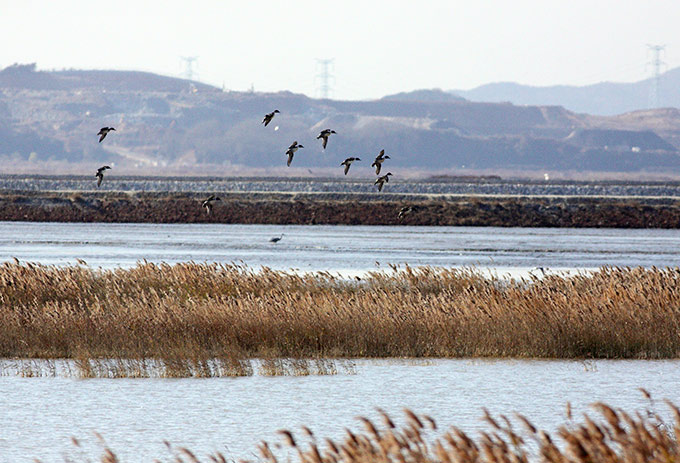
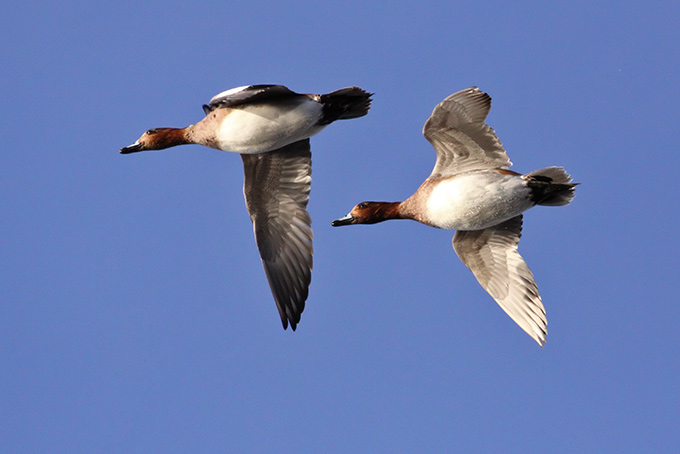
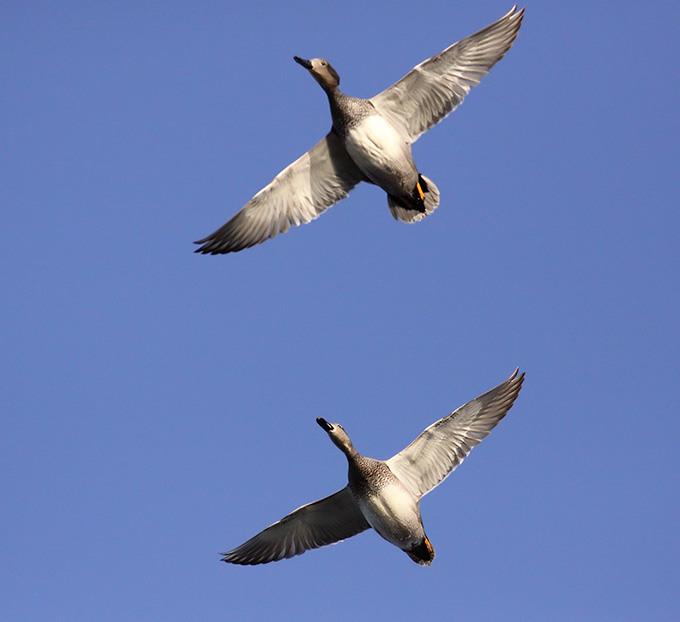
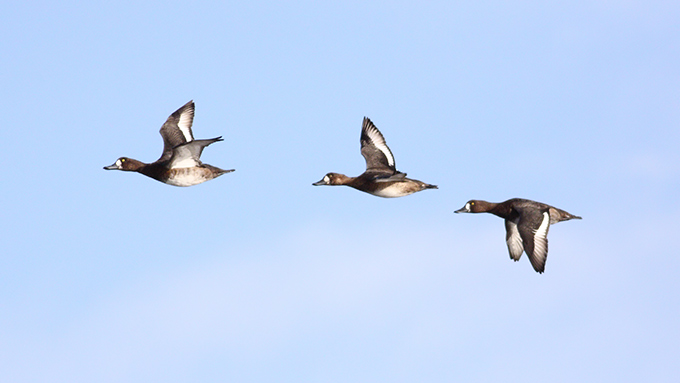
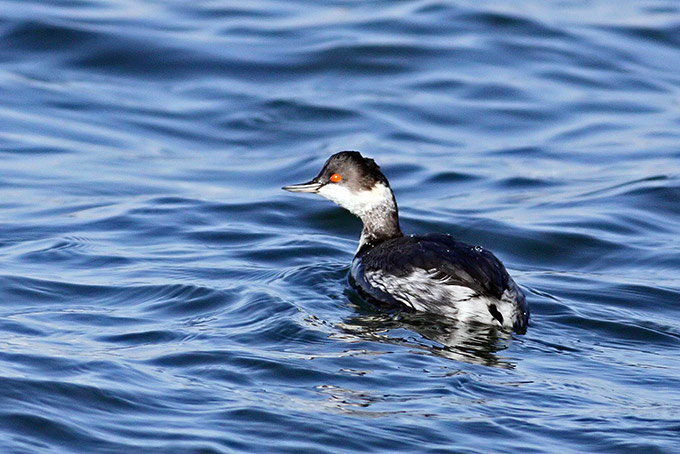
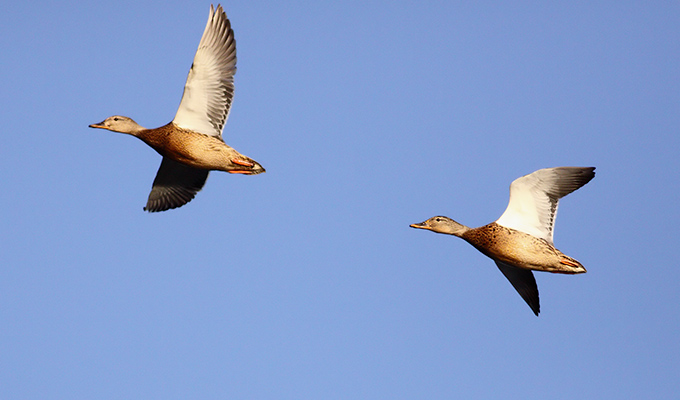
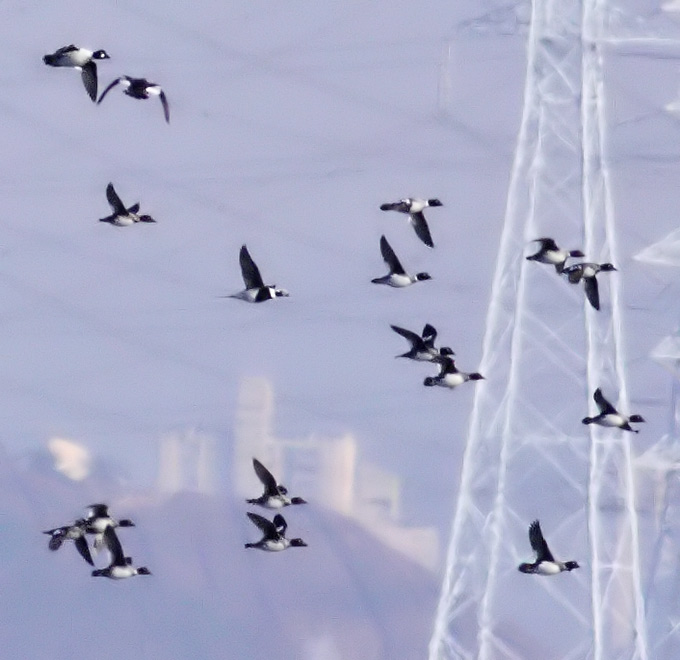
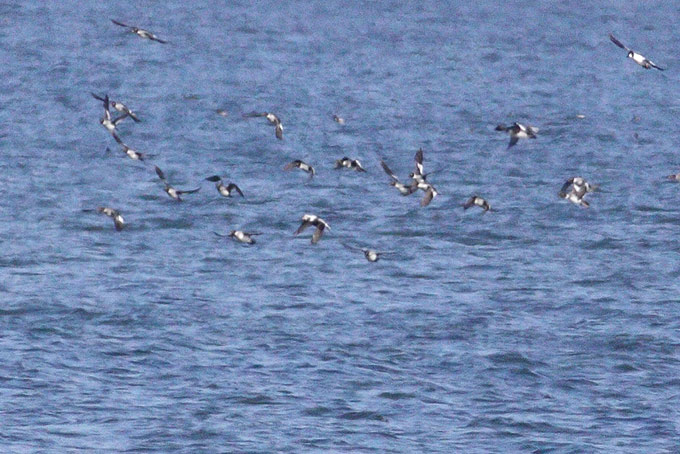
Junam Reservoir, November 20
A two-hour visit to Junam Reservoir revealed several interesting species. 29 White-naped Cranes were counted, they frequently commuted between the reservoir and nearby stubble fields. 4 Swan Geese were among the thousands of Bean and White-fronted Geese present at the site.
The recent colder spell of weather meant that wildfowl numbers at the reservoir have increased markedly. 3 Common Merganser and 6 Common Goldeneyes were newly arrived since my last visit a week ago, while Smew numbers have increased from 2 to around 40. The usual dabbling and diving ducks were much in evidence at the reservoir, including large numbers of Baikal Teal (no wildfowl counts were made due to limited time).
A juvenile White-tailed Eagle devoured a fish at its perch in a dead tree in the middle of the reservoir. A short time later, after the eagle had departed, a juvenile Northern Goshawk spooked the ducks and went on to land in the exact same tree. A juvenile Peregrine was also present.
Whooper Swans were noticeably more numerous than a week previously, and about 15 Eurasian Spoonbills were present (up from only 4 during my last visit).
An adult Slaty-backed Gull and an adult Mongolian Gull were present. Lingering summer migrants were represented by 2 Barn Swallows and 1 Red-rumped Swallow, perhaps these birds are overwintering in the area.
Shihwa Lake, November 19
An afternoon only at the lake: strong winds, cold and mixed sun and clouds. Highlight among a conservative 900 Eurasian Wigeons was a male American Wigeon (possibly but not definitely the one reported earlier in the week by various observers); one other likely American/Eurasian hybrid was noted in the distance. Also in good numbers were Falcated Duck, about 100; also a few hundred Coots, scattered Goosanders, Pochards, Tufted Ducks, Whooper Swans (a dozen), Smews (a few females), Little Grebes, Bean Geese, and, representing the raptors, a male Hen Harrier.
Gageo Island, November 18
Still under largely grey skies with periods of sleet, hail and rain but "only" moderate 4-5 NE-N winds, an interesting day, with first a survey circuit of 1-Gu, and then the long walk to 2-Gu, producing a total of 57 species logged. In 1-Gu, many fewer gulls, as most had departed with the larger fishing vessels, with species of most note the Asian Short-toed Lark still (again very poorly), and single Pacific Reef Heron, Upland Buzzard, Lapland Longspur, Long-tailed Rosefinch, Rook and Hen Harrier. On the road up to the gap, good numbers of birds, including a very late Yellow-breasted Bunting and the bird of the day - a Verditer Flycatcher, which flew up onto the overhead wires for a few seconds after the heaviest downpour had finished, and then disappeared downslope, to be relocated rather luckily, in amongst bushes etc. . This is the second record for Gageo, and probably the fifth (or so) national record (with perhaps the last on November 27th 2004 on Jeju). At 2-gu, where rather windswept, best were three rather late Richard's Pipit and a (presumed) Meadow Bunting (heard and seen only from the rear as it flew away)
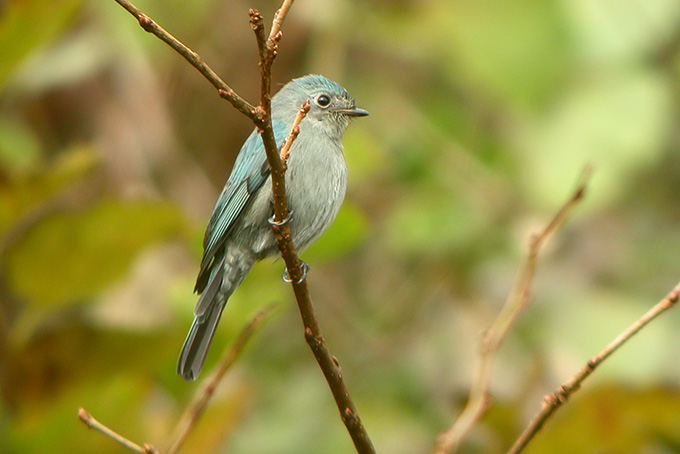
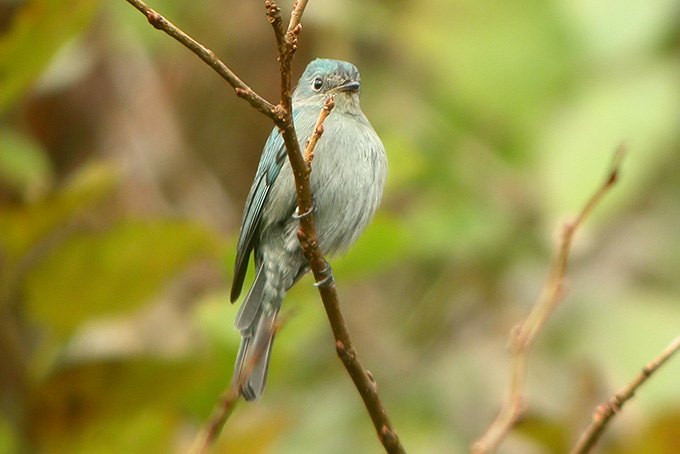
Gageo Island, November 17
In worsening weather (with rain and hail squalls, accompanied by occasionally gale force north-easterlies), hard work for both birds and bird-counter, even in the more sheltered areas of 1-Gu. In total 46 species or so, with most remarkable an estimated 15,000+ gulls present in the harbour and off the southern end, made up almost entirely of Vega Gull (8,000) and Black-tailed Gull (7,000), with next most numerous taimyrensis Heuglin's Gull (>100). On land, the clear highlight was a rather elusive and flighty Asian Short-toed Lark in the quarry, loosely associating with 20+ Far Eastern and 2 or 3 Eurasian Skylarks, while intriguingly a flock of 28-30 Longspur-like dark-looking birds with pale underwings seen at some range disappearing into trees above an area of scree strongly suggested Asian Rosy Finch, a species as yet unrecorded on the island.
Mokpo-Gageo Island, November 16
After a week of delay (with no boat on most days due to wind), a fairly rough sea crossing, with a sea-swell of between 3m and 4m at worst. While some birds might have been missed, best were two Pomarine Skua , 43 Ancient Murrelet and 12 distant (presumed) American Scoter. In 1-Gu on Gageo, a lot of wind, construction noise and dust. Most numerous were gulls, with between 9000 and 10000 in the harbor and off the southern end in the evening (made up of c90% Black-tailed and Vega Gulls), with the most numerous landbirds being Buff-bellied Pipit (65) and Far Eastern Skylark (20). Species of greatest note were single Western Great Egret, Upland Buzzard, Eye-browed Thrush and Asian Stubtail, with rarest in the Korean context being (yet another) Red-breasted Flycatcher, this one seen and heard well in the gully behind the minbak.
Seogwipo, Jeju Island, November 14
On a fresh day in Seogwipo, Mandarin Ducks were plentiful on several quiet rivers, with about 30 seen. Daurian Redstarts seemed to be everywhere, displaying and calling conspicuously. While trying to get a picture of a vocal Daurian Redstart in a field, I was surprised to look down into a reed-filled ditch and find a party of about 6 Scaly-breasted Munia (the fourth record for Korea with the first three in October 2003). They were very confiding, as they moved through the reeds feeding, with several Tree Sparrows. Most appeared to be juveniles gradually assuming adult plumage.
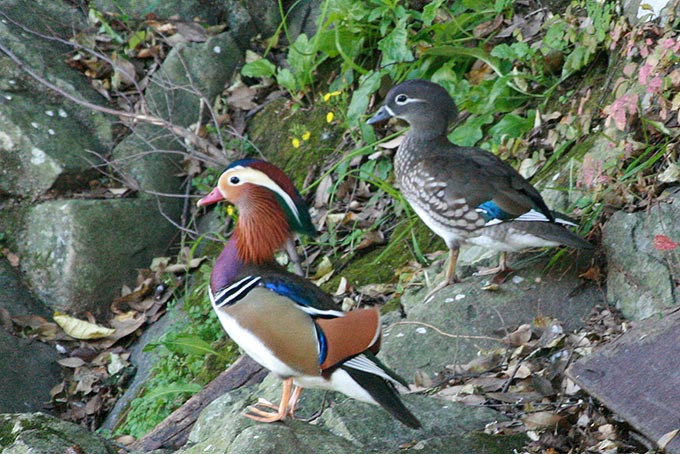
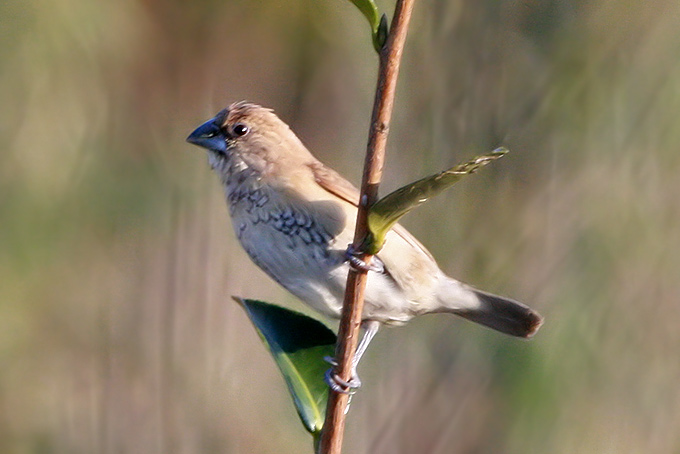
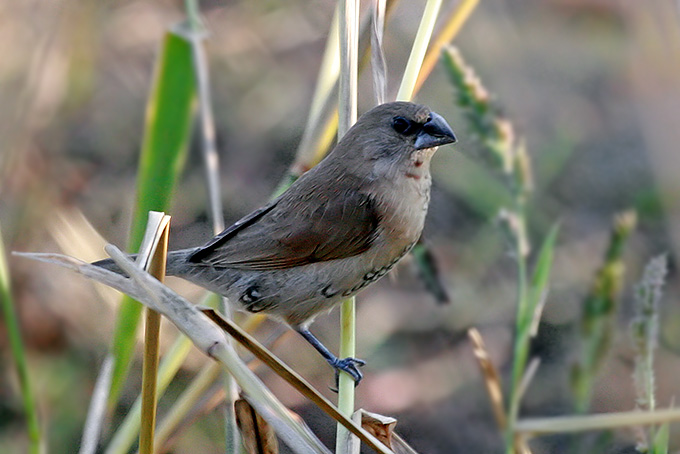
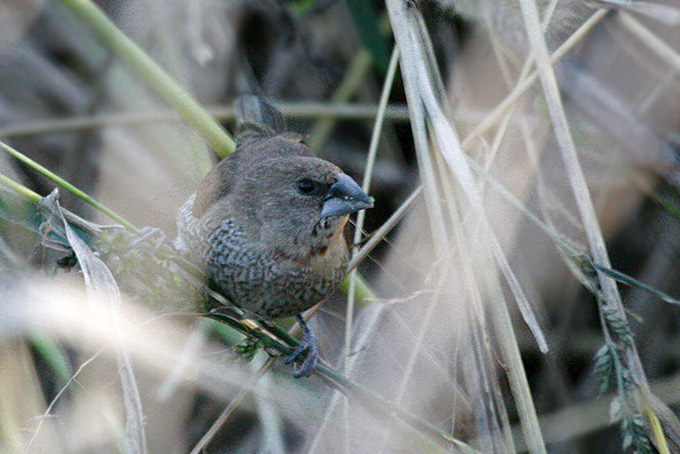
Anyangcheon, November 14
Eurasian Teal are still moulting into winter colours on my local stream - having arrived here in mid-October.
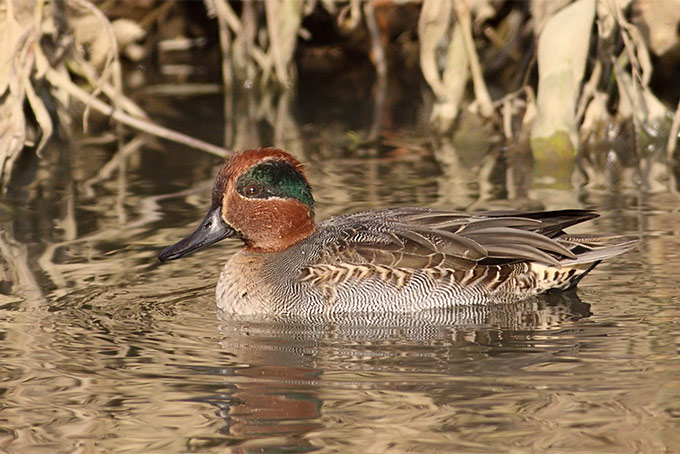
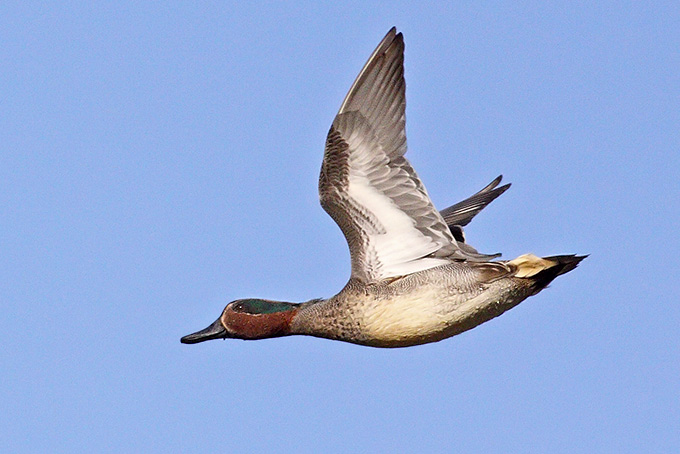

Cheolweon, November 12
A cloudy, cool and increasingly cold afternoon at Cheolweon: highlights were the season’s first Red Crowned Cranes (3), about 60 White-naped Cranes, a few thousand Greater White-fronted Geese (with only a few Bean Geese noted), one Snow Goose, a few (heard only) Azure-winged Magpies and single Bull-headed and Chinese Grey Shrikes.
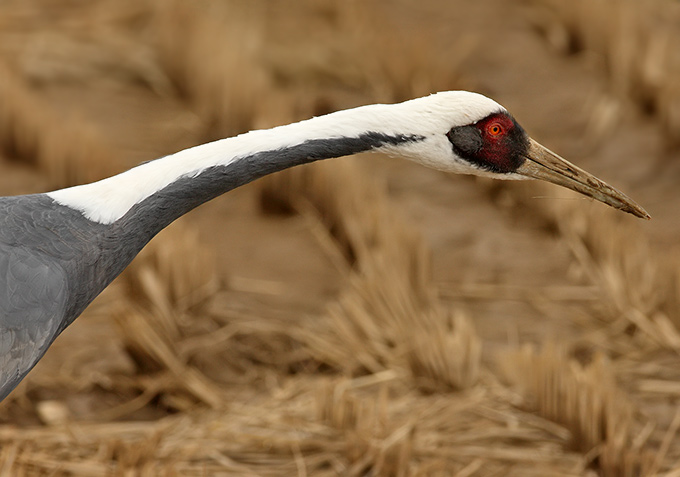
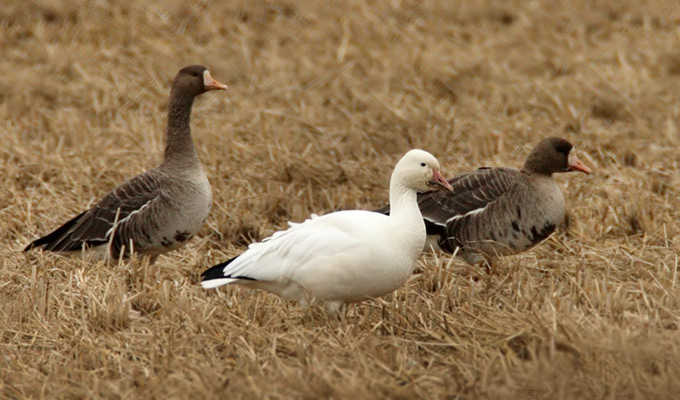
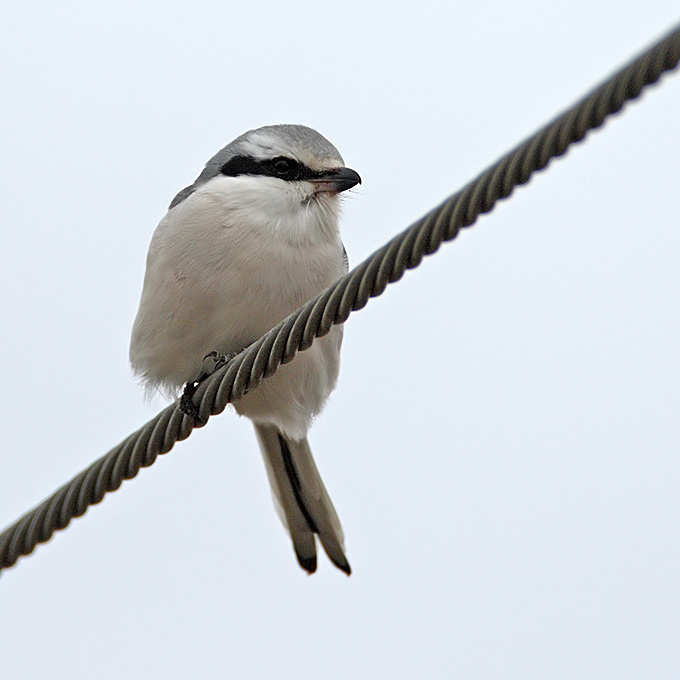
Socheong Island-Incheon-Mokpo, November 9
Before the ferry, the three juvenile Greater Spotted Eagle still, two displaying Light-vented Bulbul, and a Tree Sparrow all in/over the main village, while from the ferry, the personal first three Ancient Murrelet of the autumn, and half-a-dozen Pomarine Skua. Highlight on the mainland was from the expressway bus - at least 150,000 Baikal Teal in the air, many crossing over the bus as it crossed the Geum River.
Socheong Island, November 1-8, Highlights only.
Range of weather from gale-force winds on 1st and 2nd, and Beaufort Force 7 on morning of the 4th, with heavy rain (on 1st), snow showers (on 2nd), bright, clear and calm warm weather again by 5th, dense fog on 7th, with overcast and light rain showers followed again by fog on 8th.
November 8: The long-awaited heavy rain failed to materialise, with a few light rain showers, followed by bright sunshine and then thick fog. Best for the day were three juvenile Greater Spotted Eagle in the air together, and (yet) another Red-breasted Flycatcher - this one seen in very poor light at the base of North Point. Other species of most note included nine Pallas’s Rosefinch and a/the presumed Water Pipit again heard in flight in the east of the island.
November 7: In dense fog, the best for the day were a very late Lanceolated Warbler, a female Great Spotted Woodpecker and a Hume’s Leaf Warbler.
November 6: A Japanese Bush Warbler seen and heard was the 250th species recorded on Socheong this year (so far!), while a presumed albidus Northern Goshawk and another Red-breasted Flycatcher (heard and seen/sound-recorded) just before dark behind the school were the other major highlights.
November 4: One or two immature male Pallas’s Rosefinch at North Point (with one still present on 5th), while other highlights included a probable Japanese Bush Warbler (heard only, three times before sunrise), two or more likely three Yellow-bellied Tit (seen and sound-recorded in ‘short-stream’), one or two Grey Bunting (heard only, towards NE Point) and what on call is believed to be a Water Pipit, heard three or four times during a 30 minute period (when also seen briefly in flight).
November 3: Best for the day were one third calendar year and one sub-adult type Steppe Eagle which came in from the SE, and went NW together, while the Red-breasted Flycatcher found by RN on 2nd was apparently still present near second village (heard only), and 7 Pallas’s Rosefinch were seen departing North Point.
November 2: 1300 Brambling, a new island high count of 6,300 Black-legged Kittiwake, (including the first two juveniles/First-winters of the autumn), ten species of bunting (including Yellow-browed and half-a-dozen Tristram's) and a new island high count of 8 Lapland Longspur ‘down’.
November 1: Male Pine Bunting, 490 Yellow-throated and 330 Rustic Buntings, a Dunlin and 4,320 Black-legged Kittiwake.
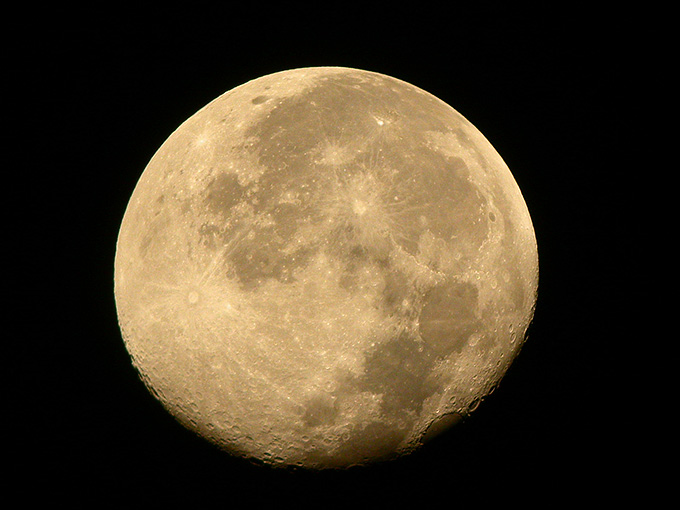
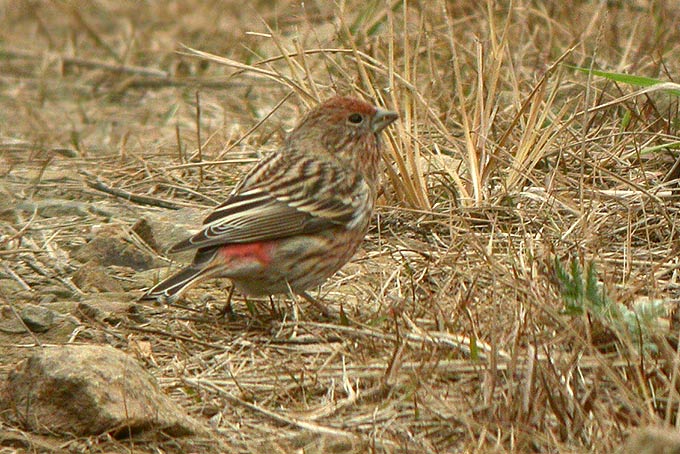

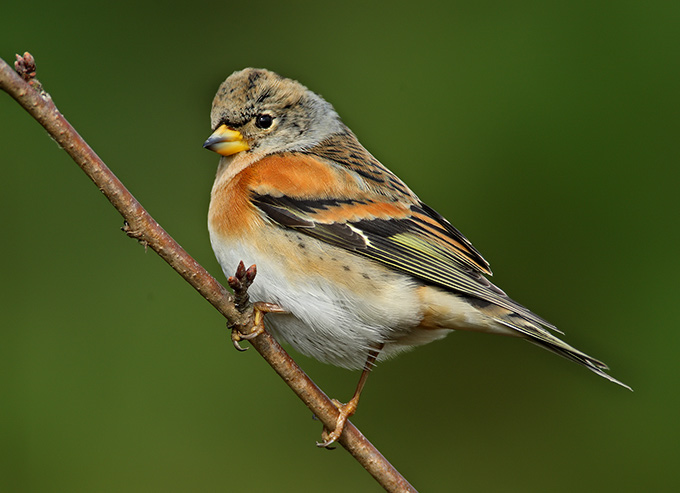
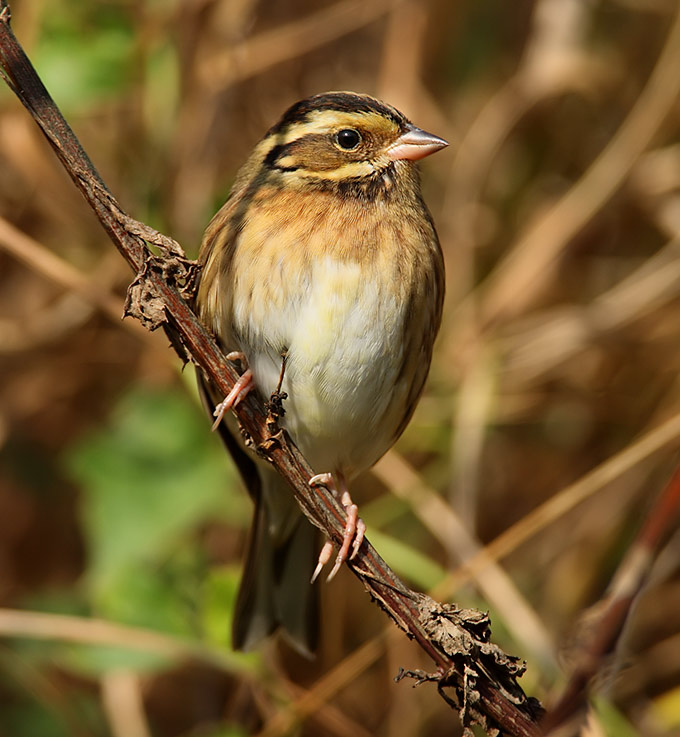
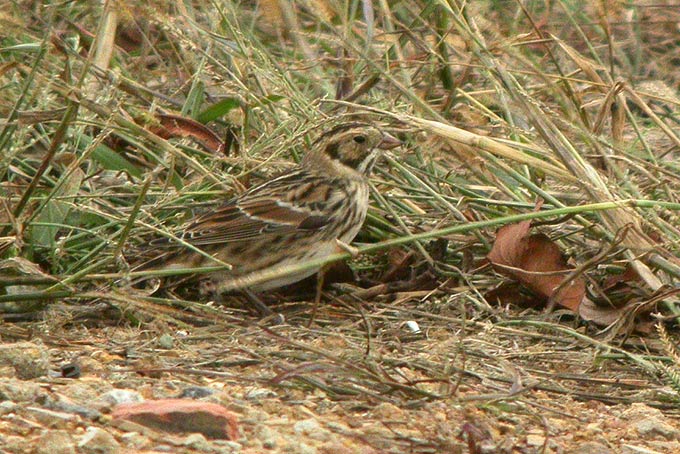
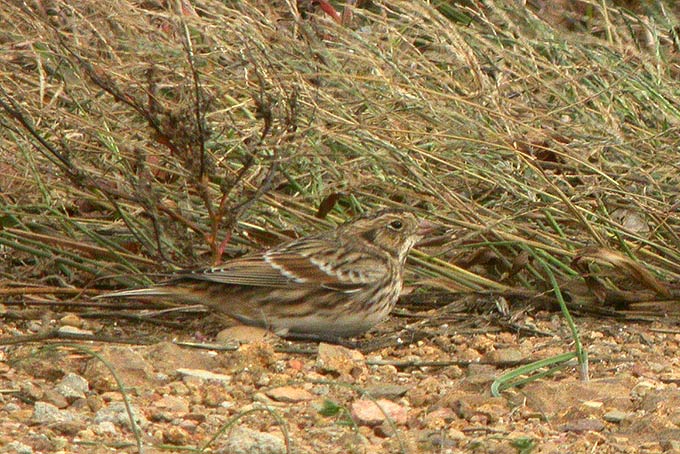
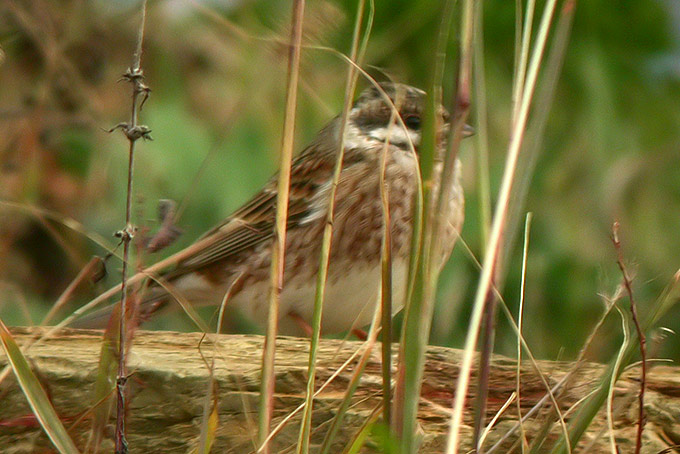
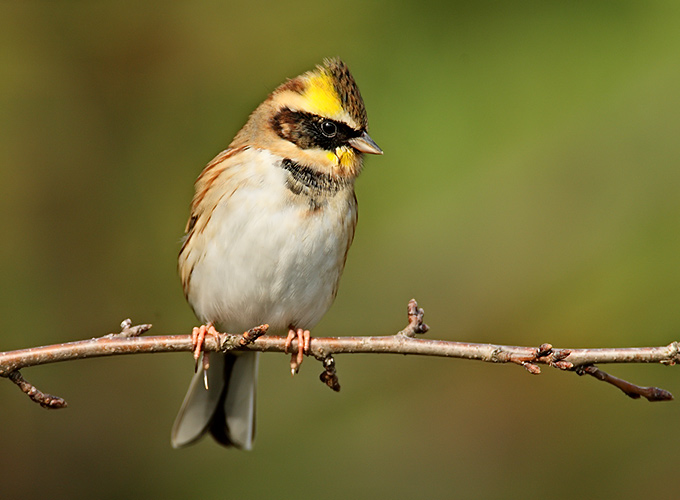
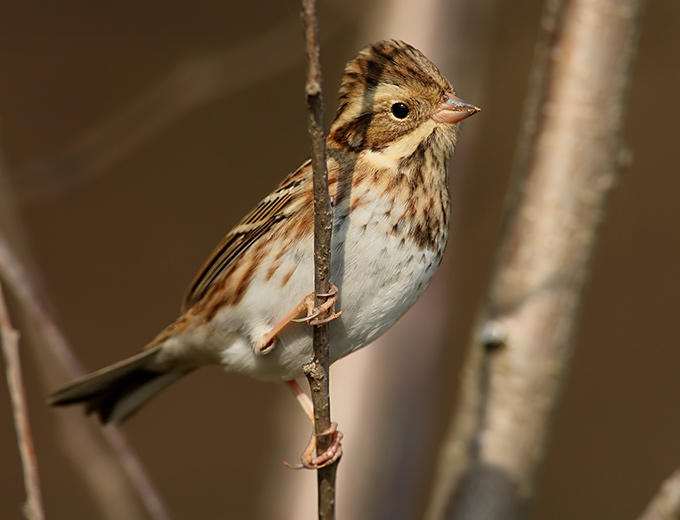
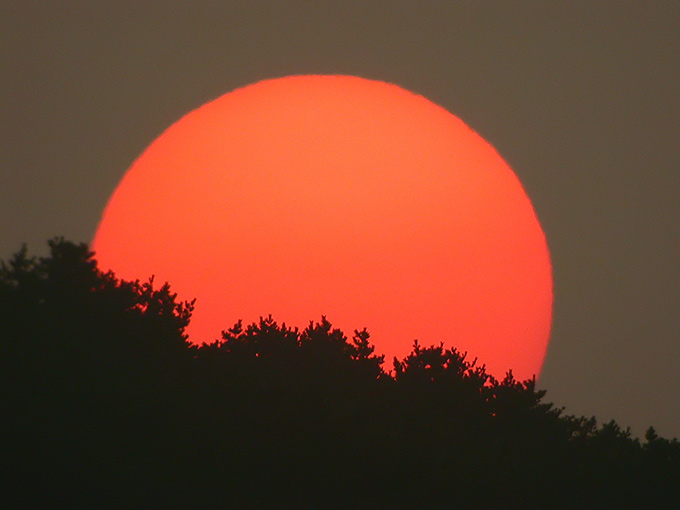
Paldang, November 7
Unfortunately a swathe of new construction work has gouged out much formerly good riverside habitat around Dokseo, and the opposite riverbank is now a sterile concrete slab with a busy park for day-trippers. However birds were still in evidence towards the quieter Paldang bridge area, where best were 1 White-tailed Eagle, 5 Cinereous Vulture, a juv. Northern Goshawk, 2 Japanese Wagtail, 52 Whooper Swan, c. 80 Goldeneye, and 2 Taiga Bean Goose. Also present were the regular Pochard, Tufted Duck, Goosander and in the scrub, a Winter Wren, 2 presumed Eurasian Skylark and several WhiteWagtail.
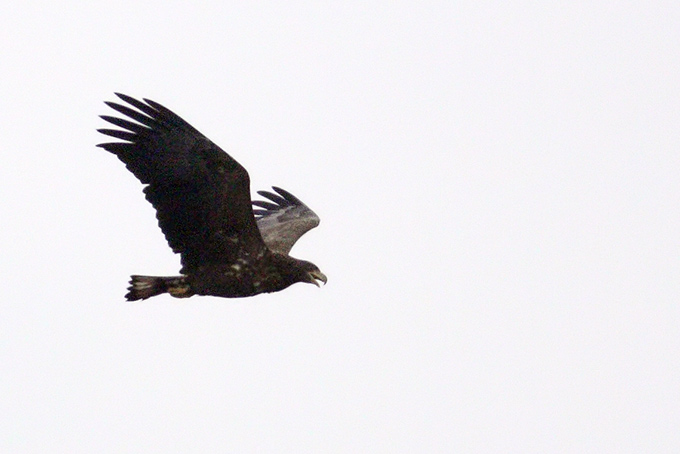

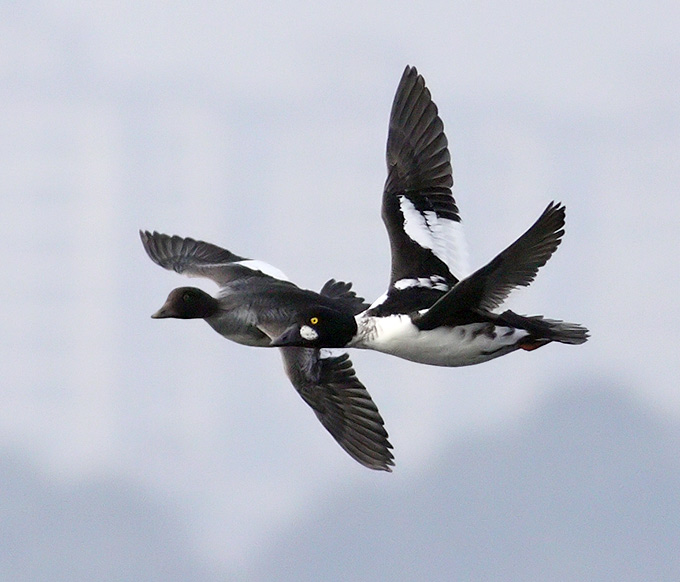
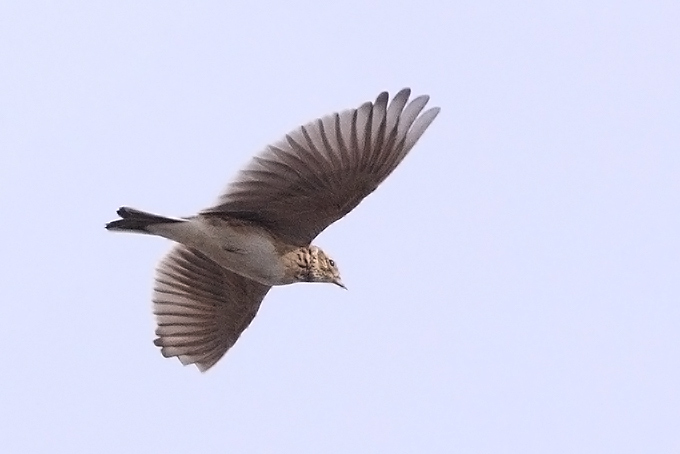
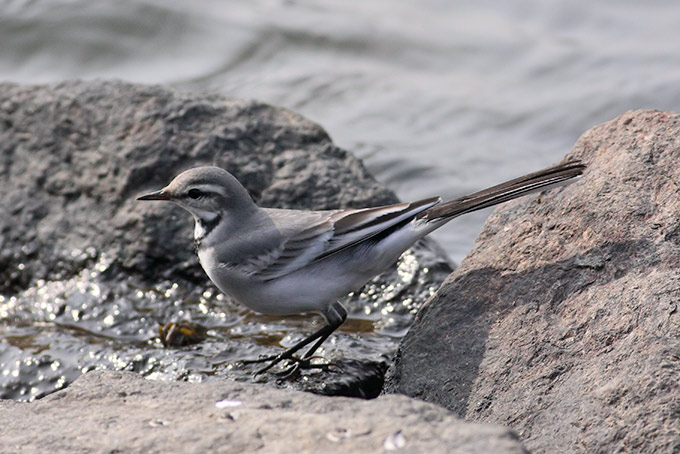
Buk Gil-ri, Muan county, November 3
On a sunny afternoon with high tide the attempt to find the Swan Geese seen the week before failed and only few Spott-billed Duck, Mallard and Eurasian Teal along with 2 Common Merganser were seen on the tidal area due to some boat activity. On a wall 6 Grey Heron were constantly flushed by passing cars. In a small lake on the other side of the road 15 Little Egret, some more Eurasian Teal and Spot-billed Duck, 5 Coot, and surprisingly a single Spotted Redshank were found. In the fields beside a flock of 18 Buff-bellied Pipt, 14 Oriental Turtle Dove and ca. 20 Siberian Stonechat could be observed from close distance as well as a Daurian Redstart. In the river beside the fields ca. 300 more ducks and some more Coots were on the water.
